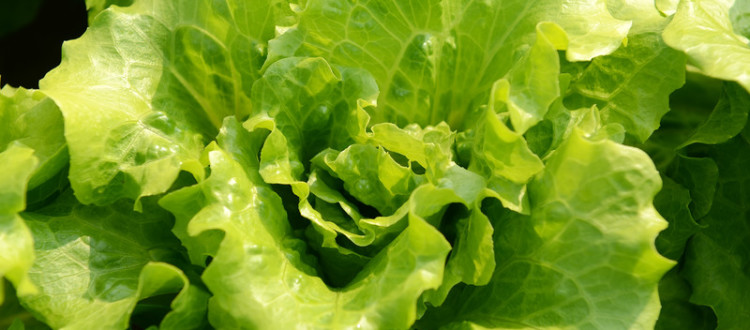Lettuce
Lettuce (Lactuca sativa) is one of the oldest food plants known to man. It is believed to have originated in Central Asia or India, and was a favorite food in Ancient Greece.
Gone are the days of the ubiquitous iceberg lettuce salad with a lone cherry tomato plopped on the side and maybe a cucumber slice. Thanks to the help of Alice Waters, Renee Shepherd and adventurous farmers like Todd Koons of TKO farms, a new appreciation of all things lettuce began in the early 80s. Consumers were introduced to salad mixes called mesclun (French for “mixture”) with assorted baby leaf greens, red oakleaf, curly leafed greens, and even herbs. These days, baby romaine and leaf lettuces, European crispheads and butterheads are readily available at farmers markets. But, the freshest lettuce comes right out of your own garden!
Although lettuce is a cool season crop, coastal California climate has the distinction of being able to produce commercial crops all year round. Carefully selected adapted varieties can extend the season through the summer even in some of the warmer climates of California.
Planting
Lettuce can be planted as soon as the soil can be worked, even through the winter if a raised bed is managed with tarps to keep the beds dry. Properly hardened off seedlings can withstand very low temperatures as low as 20 degrees. For head lettuce, choose varieties suitable for the season, based on when you plant and when you plan to harvest. Give the young seedlings a good watering before removing from the tray.
Plant lettuce in soil that drains well, but maintains moisture. Work in plenty of organic matter (compost, rotted manure, or leaf mold) to loosen and enrich the soil. Strive for a pH of 6.0 to 6.8.
For large heading types like Romaines or Butter heads, plant seedlings 10-12 inches apart in rows 18 inches apart. For smaller heads, plant 8-10 inches apart in rows of 12- 18 inches. If you plan to pick the baby leaves continuously, you can plant them quite closely together in a double row about 4-6 inches apart.
Fertilizing
Prepare the soil before planting with lots of nitrogen rich organic material such as a mature manure compost, fish meal and/or blood meal. There are a number of good quality choices for organic fertilizers — choose one with a high nitrogen formulation for a good slow release of nutrients, preferably one that includes microbials. If this isn’t an option, fish emulsion is a fine input to encourage a strong start. As always, follow the directions carefully for any fertilizer you use.
Harvesting
For full size heads, days to maturity can be 3-4 weeks later in cool weather, and up to one week earlier in hot weather. Keeping the plants well fertilized and properly watered will ensure lush foliar growth and dense, deep heads. A heat wave or lack of water can trigger the plants to bolt, and if you see any signs of bolting, you should harvest the head immediately.
Leaf lettuce can be left to grow to full size and then harvested whole, or contiuously picked at for a period of time before the plant will bolt and go to seed, no matter what you say or do!

